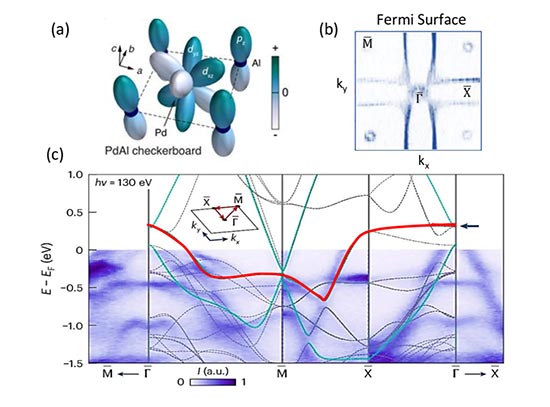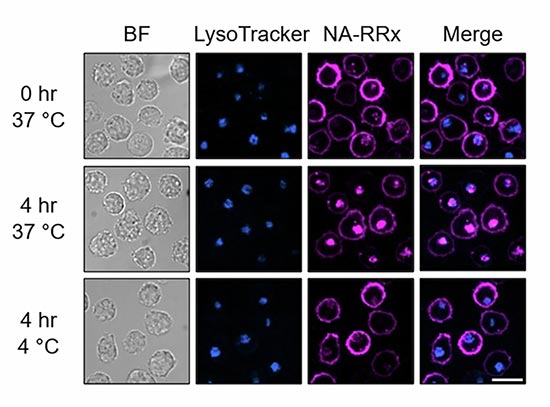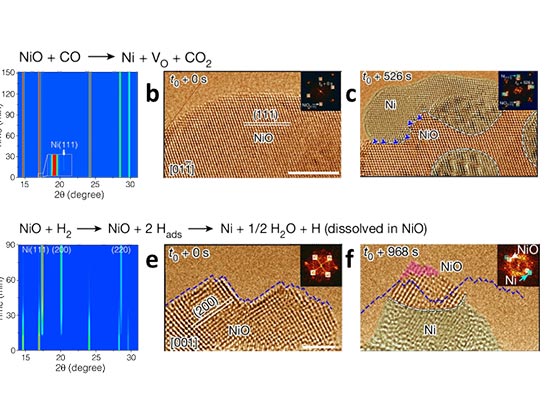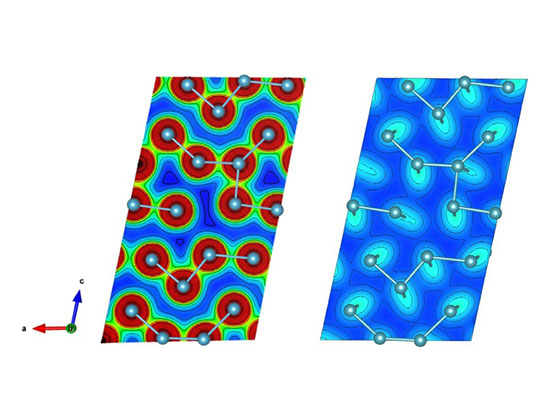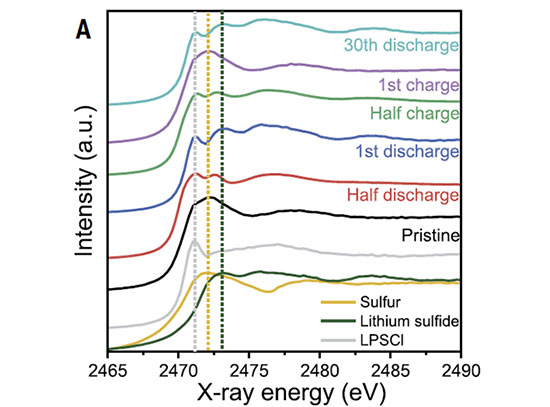Liquid-Helium Improves Detector Performance for Nanoscale Material Characterization
March 8, 2024
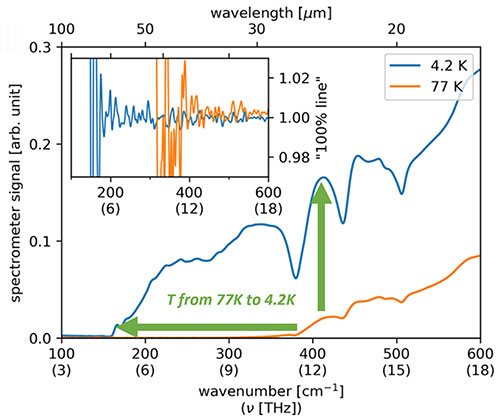 enlarge
enlarge
When cooled with liquid helium (blue line), the detection threshold reaches into THz and overall detector sensitivity is significantly improved. Credit: ACS Photonics 10 (12): 4329 –4339 (2023)
The Science
Scientists discover that liquid-helium-cooled, photoconductive mercury-cadmium-telluride (MCT) detects beyond 50 µm wavelength with improved speed and sensitivity for far-infrared near-field nanospectroscopy.
The Impact
Researchers can now get a clearer view into the terahertz gap, a difficult-to-capture frequency that will unlock relatively unexplored nanoscale and quantum material properties.
Summary
Near-field infrared nanospectroscopy is a powerful tool for material characterization in chemistry, physics, engineering, and more, but it has its limitations. Material excitations in the single terahertz (THz) range, an area known as the THz gap, remain relatively unexplored. Wavelengths in this gap, colloquially referred to as the “dead zone,” lie in between visible light and microwaves and are challenging to detect. Being able to characterize materials in this range would allow researchers to observe quantum phenomenon that play a role in quantum computing and quantum information science. To address these challenges, researchers led by scientists at the National Synchrotron Light Source II (NSLS-II) at Brookhaven National Laboratory studied a novel way to improve a fast detector in near-field nanospectroscopy using liquid-Helium-cooled, photoconductive mercury-cadmium-telluride (MCT). The work was performed at the Magnetospectroscopy, Ellipsometry and Time-Resolved Optical Spectroscopies (MET) infrared beamline 22-IR-2 at NSLS-II, a U.S. Department of Energy Office of Science User Facility at Brookhaven National Laboratory.
An important factor in the detection threshold and band gap of this kind of detector system is temperature control. In many semiconductors, lowering the temperature causes the band edge to shift to higher energies. However, for this system using MCT, the band edge shifts to lower energies with decreasing temperature. To demonstrate this, the research team took point nanospectroscopy measurements of gold, zinc selenide, and barium fluoride. Gold provides a spectrally flat infrared response and made an ideal reference sample. Zinc selenide and barium fluoride, however, would be more challenging to measure in the mid-infrared spectral range and put the new detector to the test.
They looked at detector’s spectral response, how sensitive the detector is to different wavelengths of light, the signal to noise ratio, how much of what they are detecting is data versus background noise, and the detector’s response speeds at two very cold temperatures—77 K (-321.1°F) and 4.2 K (-452.1°F). The team found that lowering the temperature of the MCT detector to 4.2 K (compared to only 77 K) decreased the detection threshold and increased sensitivity and speed. These improvements are significant and will have a profound impact on the near-field technique as it allows scientists to peer into the THz gap. The detector is now available to users at the MET beamline at NSLS-II.
Download the research summary slide (PDF)
Contact
Lukas Wehmeier
Brookhaven National Laboratory
lwehmeier@bnl.gov
Mengkun Liu
Brookhaven National Laboratory
mengkun.liu@stonybrook.edu
G. Lawrence Carr
Brookhaven National Laboratory
carr@bnl.gov
Publications
Lukas Wehmeier, Mengkun Liu, Suji Park, Houk Jang, D. N. Basov, Christopher C. Homes, and G. Lawrence Carr. Ultrabroadband Terahertz Near-Field Nanospectroscopy with a HgCdTe Detector. ACS Photonics 10 (12), 4329-4339 (2023). doi: 10.1021/acsphotonics.3c01148
Funding
Research on near-field studies of low-dimensional materials was supported as part of Programmable Quantum Materials (Pro-QM), an Energy Frontier Research Center (EFRC) funded by the U.S. Department of Energy (DOE), Office of Science, Basic Energy Sciences (BES), under award DE-SC0019443. The construction of the near-field instrument was funded by the U.S. Department of Energy, Office of Science, National Quantum Information Science Research Centers, Co-design Center for Quantum Advantage (C2QA) under contract number DE-SC0012704. For synchrotron-based infrared nanospectroscopy, this research used the MET beamline of the National Synchrotron Light Source II, a U.S. Department of Energy (DOE) Office of Science User Facility operated for the DOE Office of Science by Brookhaven National Laboratory under Contract No. DE-SC0012704. For sample fabrication, this research used Quantum Material Press (QPress) of the Center for Functional Nanomaterials (CFN), which is a U.S. Department of Energy Office of Science User Facility, at Brookhaven National Laboratory under Contract No. DE-SC0012704. The team is are grateful to Attocube for the use of the NeaSNOM near-field microscope.
2024-21777 | INT/EXT | Newsroom




